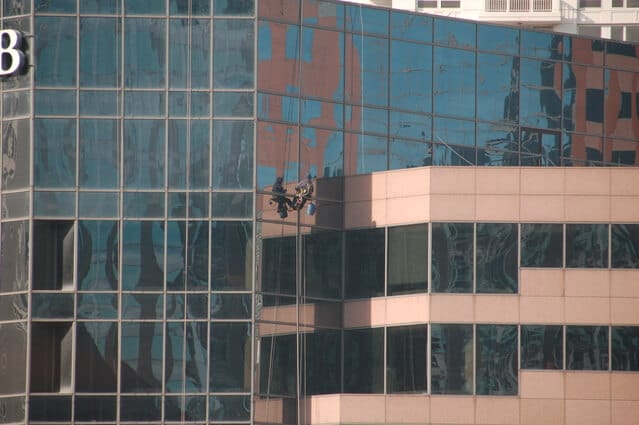Here’s something to avoid in your written communications. Inexperienced writers (and even some experienced ones!) occasionally make dangling participle errors. Sound like something your high-school English teacher would say? Maybe, but professionals do not dare to make errors like these. Professional-level writing requires a professional-level understanding of grammar and clarity.
(more…)
Editing
Don’t Leave ‘Em Dangling
It’s. Embarrassing.
Last week, I received an email from a blog I subscribe to, one I’ve always regarded as highly professional. That opinion dipped somewhat when I saw the headline misusing the word “it’s.”
“5 Things [FORTUNE 50 COMPANY] is Doing to Improve It’s Image (That You Can Do, Too!)”
These master marketers had mistakenly used the contraction form of “it is” instead of the possessive form, which doesn’t take the apostrophe.
The rest of the article used the possessive pronoun correctly, but the headline still gave me that moment’s pause.
We’ll write more about the “its” vs. “it’s” debate later, likely many times over the course of this blog. The big lesson here is the need for proofreading. Even the most diligent among us can overlook a glaring error – especially when we’ve already reviewed the material a half dozen times or so. When you’re writing for public consumption, those glaring gaffes can cost you credibility.
Before you hit “send” or sign off on that brochure, have fresh eyes proofread for you. After a point, we become virtually useless when it comes to reviewing our own work – or a project with which we’ve been closely involved. We all know someone whose superior command of English grammar slips toward annoying. Take advantage of that person’s persnickety tendencies.
If it’s up to you and you alone, try this:
Step away from the words. Head to Starbucks. Go to lunch. Do something completely different and clear your head before you give a document the final once-over. Like driving, proofreading doesn’t mix well with distraction.
Print the document. We read differently on screen than on paper. It’s easier to catch mistakes on a hard copy.
Read the words out loud. This approach forces you to look at each word – no skimming. You might also find some rough patches that need help.
Check the details. Make a list of critical items like name spellings, addresses, telephone numbers, etc., and check it against the final document. (Someone close to me recently worked very hard on his company’s new business cards – only to discover the city name was misspelled in the final product.)
Sure, everyone makes mistakes. But in a business setting, those errors have the potential to flub your company’s first impression on a prospective client, employee or strategic partner. Do you really want to take that chance?
Copyediting vs. Copywriting
Sometimes clients don’t have the budget to hire a writer to handle a project from start to finish. In these cases, it often makes sense to use copyediting services, where a professional editor reviews and cleans up work produced by the client.
We offer different levels of copyediting, depending on a client’s needs and budget.
At its most basic, we scrub the text and clean up spelling, grammar, and punctuation. We also review the copy for stylistic consistency and check basic facts.
In some instances, we recommend more extensive revisions, during which we rewrite the text to improve flow and reduce jargon. We also add our marketing expertise to the mix and recast information to appeal to the target audience.
When it comes to suggesting marketing strategy and strengthening the copy with juicy, convincing proof, the project moves into the realm of copywriting. Here, we take over the project and apply our full creative faculties to help clients increase revenue through profitable persuasion. It’s a different level of help – with an entirely different pricing structure.
If you need help but aren’t sure what type, give us a shout. We’re happy to discuss the project and your goals at no cost. And if we’re not a good fit, we’ll recommend someone who can better meet your needs.
Don’t Scare the Bamboo
Each time I visit Taiwan, I fall more in love with my mother’s country. The island’s natural beauty, the food, the culture – all make me proud of my Taiwanese heritage.
A friend who recently visited Taiwan described it as one of the world’s most under-rated travel destinations.
He has a point. But Taiwan has at least one serious challenge to overcome before tourists flock to its shores.
As a whole, the country does not cater well to English speakers.
I’m not trying to be the ugly American here, but English works pretty well as a universal language.
Which is easier: Trying to teach Taiwanese [insert nationality of choice] how to speak German, French, Spanish, Russian, Farsi, etc., or using English?
Signs of the Times
In the past 11 days, I’ve seen a number of hysterical signs and slogans that reflect the Taiwanese appreciation of the English language – minus editorial oversight.
Some of my favorites:
- “Baby & Kids Swears.” Reading this billboard for a children’s clothing store, I can hear my cousin’s voice clearly in my head. Of course, it’s supposed to read “Baby & Kidswear.” But it gives me a chuckle to think of precocious little tots swearing a blue streak.
- “Lideas.” It looks like a Greek heroine, but it was actually on a sign for a public women’s restroom. Occasionally, you see words with all the right letters, but in a nonsensical order. My aunt, for example, wore a varsity-looking shirt that said “NUISERVITY.”
- “Scared Bamboo.” I knelt down to read a sign in a public botanical display and laughed out loud. I’m guessing this particular plant holds some sort of holy significance. Or maybe some long-ago gardener frightened it and permanently altered the plant’s appearance.
Having studied a number of foreign languages, I admire the Taiwanese for bravely experimenting with English.
Now, it’s time to take the next step and finesse those skills with some editorial direction – something from which we can all benefit, yours truly included.
Brilliant Beginnings
As I write this, it’s January 12 – or January 13, depending on your geography. (Since I’m presently flying over Alaska toward Japan, I feel caught between dates.) Regardless, we’re darn close to the start of the New Year. New resolutions, new beginnings.
For Mom and me, it’s the start of our latest adventure: three weeks in Taiwan with family.
For me and my business (and my writing life), today also marks the start of this new blog.
Beginnings always create unrealistic expectations of greatness. We feel the need to show our brilliance. This nasty pressure especially plagues writers, who so often give up on their craft because they’re disappointed with early attempts.
It’s okay to suck.
In Bird by Bird, one of the best books on writing I’ve ever read, Anne Lamott says it’s okay to write “really [crappy] first drafts.”
This isn’t just sound advice; it’s almost a universal mandate. Papa Hemingway himself said, “The first draft of anything is [doodoo].”
You have to write the garbage to get the gold.
It doesn’t matter if you’re writing the Great American Novel, a sales letter, or an e-book. With very rare exception, our first attempts fall way short of brilliance.
Sure, these initial scribblings may get the job done. Writing a memo to your boss? Just the facts will probably suffice.
But if you really want your writing to stand out, you must embrace the art of the rewrite.
Ninth time’s the charm?
Almost one year ago, the very talented Liz Martinez invited me to submit a short story for an anthology on Native American noir. I decided to take the plunge, seizing an opportunity to learn more about my Native American heritage.
My story came together over several months, many sessions of which felt like certain NaNoWriMo adventures. I’d sit at my computer or take a notebook and pen and write whatever drivel came to mind. Much of it sounded like crapola, but I had to forge ahead to the end.
Due to time constraints, I showed the complete, imperfect draft to my husband, one of my biggest fans – and one of my most direct critics. Tony offered praise and pointed out current plot holes.
I smiled, nodded, silently vowed not to do his laundry for the next three months, and went back to my keyboard. Roughly 50% of the story changed in the next draft.
We went through this exercise twice more before submitting the story for editorial review.
Then, Sarah Cortez, Liz’s sharp and insightful co-editor, gently guided me through the real revision process. While I’ve worked with editors in the business world, fiction editing was another animal. Together, we produced five more drafts before arriving at the final story that was submitted to the publisher.
The process, not the product.
So much in life comes down to the process, not simply the end product. For instance, I know very few writers who actually enjoy writing, but almost all enjoy the satisfaction of having written a solid piece.
Becoming a better writer – whether you’re a blogger, a marketing writer, a journalist, or a novelist – means giving yourself permission to write badly.
- Write in great quantities.
- Accept your malformed early drafts for what they are.
- Make them better.
- Rinse and repeat. Again.
Whatever the challenge ahead, attack it with gusto. Accept the fact that success may involve many failed attempts. It’s the courage to fail – and to learn from our mistakes – that will ultimately transform our dreams into reality.
Latest from the blog:
Website Traffic and SEO
In this post, I’ll take a closer look at SEO and the process of optimizing websites for better placement within organic search results to improve website traffic.
Read the Article »


